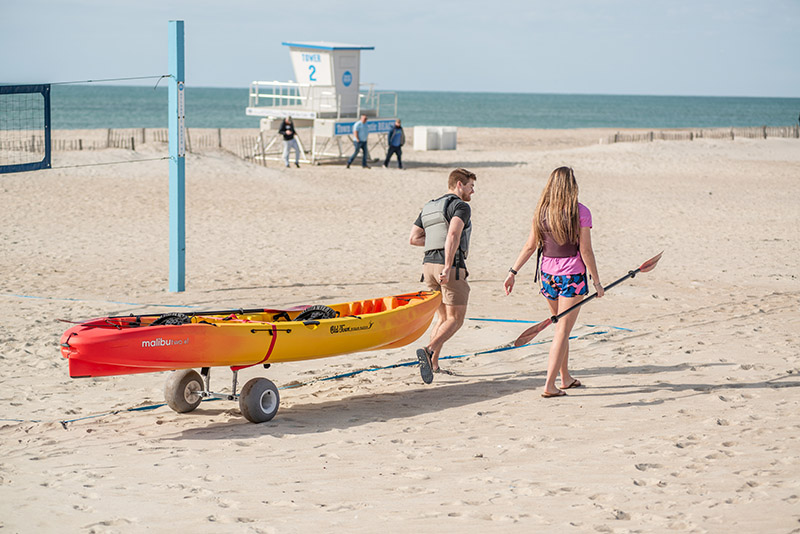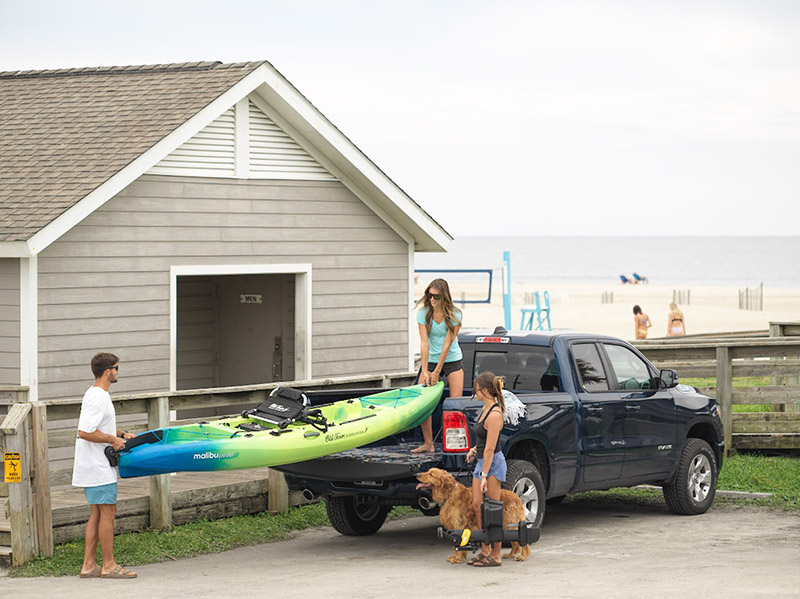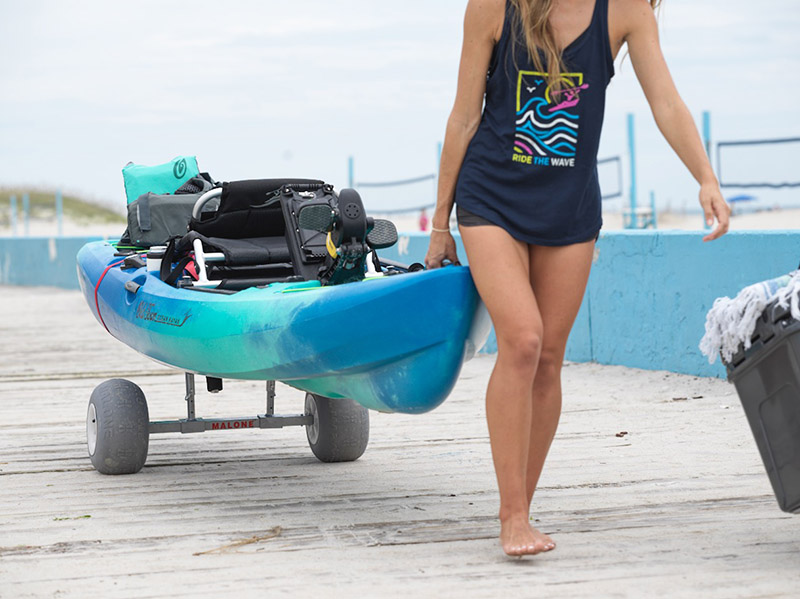How to Transport a Kayak Like a Pro
Transporting a kayak can seem daunting, especially for beginners. However, with the right knowledge and equipment, it becomes a straightforward task after some practice. Whether you're heading to a serene lake or the sunny coast, efficiently transporting your kayak is an important part of the process.
This guide aims to provide kayak owners and enthusiasts, from novices to seasoned paddlers, with some basic tips to help transport your kayak from point A to point B as efficiently as possible.

Choosing the Right Kayak Transportation Method
Selecting the appropriate method for transporting your kayak depends on your vehicle type and personal preferences. Here are the most common methods:
- Roof Rack: Ideal for most vehicles, roof racks are versatile and widely used. They offer stability and security but require proper installation and kayak mounting techniques.
- Pickup Truck Bed: Trucks provide ample space, making it easy to load kayaks in the bed or use overhead racks. Bed extenders are also available for transportation.
- Trailer: Trailers are a more straightforward way to transport one kayak or two kayaks. They offer excellent security but require additional driving skills and storage space.
Roof Rack
Most cars and SUVs can be modified with crossbars, roof racks, and kayak specific carriers.
- Advantages: Stable, versatile, and frees up interior space.
- Disadvantages: Requires installation and can be challenging to load depending on vehicle height.
Although some strap down their kayak to the roof cross bars with straps, we like the dedicated Downloader J-Style Kayak Carrier because of its fold-down arms, low clearance, ease of loading, and universal fit for most car load bars.

Pickup Truck Bed
Pickup trucks are versatile for hauling just about anything, including kayaks. Securely transporting your kayak in your truck bed may depend on the length of both your truck bed and kayak. For example, a tandem kayak is usually longer than a solo kayak.
- Advantages: Spacious and easy to load.
- Disadvantages: Requires proper securing and many beds may not be long enough depending on kayak length.
We like using a truck bed extender when transporting kayaks. The Axis Angler Bed Extender Package is simple and affordable option that makes loading a breeze.
Kayak Trailer
A trailer is an excellent method to transport a kayak assuming your vehicle has a tow package.
- Advantages: Saves car or truck space and makes launching your kayak easy.
- Disadvantages: Requires additional storage and impacts driving dynamics.
Essential Gear and Accessories for Transporting a Kayak
When preparing to transport your kayak, you may need several of these items:
- Kayak
- Roof Cross Bars
- Roof Rack
- Roof Kayak Carrier
- Kayak Straps or Tie-Downs (Cam Straps)
- Bungee Cords or Deck Lines (Bow and Stern Lines)
- Kayak Lift System
- Trailer
- Towels, Blankets, or Padding
- Foam Blocks or Cradles
- Safety Flag and Lights

Using a Kayak Cart
If you want to make life easier and reduce strain or the potential of injury, then a kayak cart is your best friend. Kayak carts are ideal for easy kayak transport from storage to your vehicle and from your vehicle to the water and back.
For harder terrain like concrete or dirt we like the YakAttack TowNGo Bunkster kayak cart. If you're transporting your kayak over softer terrain like sand, you can purchase larger beach tires for the Bunkster cart.
How to Carry a Kayak
Here are some tips on carrying a kayak solo or with a partner to your vehicle or to the water:
Carrying a Kayak Solo
- Stand at the side of the kayak.
- Bend your knees and keep your back straight.
- Reach across to the far side of the cockpit and grab the opposite edge.
- Lift the kayak onto your thighs.
- Slide your hand towards you along the cockpit until it reaches the nearest edge.
- Stand up, lifting the kayak onto your shoulder.
- Balance the weight evenly on your shoulder.
Carrying a Kayak with a Partner
- Each person should stand at either end of the kayak.
- Bend your knees and keep your backs straight.
- Lift the kayak at the same time.
- Make sure the path is clear before carrying the kayak to avoid tripping or stumbling.
General Tips When Transporting a Kayak
- Always follow manufacturer guidelines when using transportation equipment.
- Use a safety or trailer flag on the kayak's rear if it extends beyond your vehicle.
- Regularly check the straps during transport, especially on long trips.
- Avoid driving at high speeds or making sudden maneuvers.
- Be mindful of the weather conditions, especially strong winds.
- Do NOT use ratchet straps, as overtightening is common with this type of strap.
Common Kayak Transportation Mistakes to Avoid
- Over-tightening straps, which can damage the kayak or weaken your roof supports
- Under-securing the kayak, leading to movement during transport.
- Neglecting regular strap inspections, risking strap failure.






